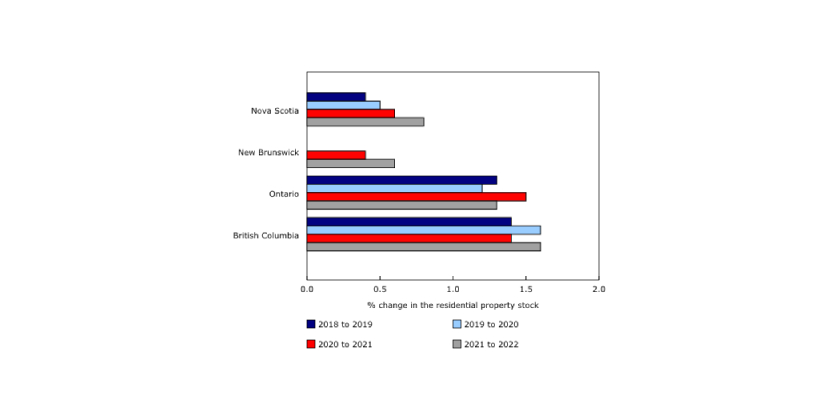Canadian Housing Statistics Program: New Residential Properties, 2022

October 16, 2023
Preliminary estimates from the Canadian Housing Statistics Program show that from 2021 to 2022, the residential property stock—all residential properties, excluding vacant land—grew by 1.3% in Ontario, slower than the 1.5% rate of growth from 2020 to 2021. In the Toronto census metropolitan area (CMA), the stock of residential properties grew by 1.7% (representing 29,905 net new properties) from 2021 to 2022, compared with 1.9% (+33,520 net new properties) from 2020 to 2021.
Growth in the stock of residential properties from 2021 to 2022 accelerated to 1.6% in British Columbia, compared with 1.4% from 2020 to 2021. In the Vancouver CMA, the number of residential properties grew by 2.1% (+16,705 properties), compared with 1.6% (+12,945 properties) in the previous period.
Preliminary data for the 2022 reference year are available at the CMA and the census agglomeration level for Newfoundland and Labrador, Nova Scotia, New Brunswick, Ontario, British Columbia, and the Northwest Territories. Further detailed information on the characteristics of residential properties for all provinces and territories, except Quebec, will be released at a later point. Preliminary data are subject to revision.

















